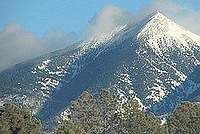 一座山、一座噴泉、一個洞窟與一叢樹…雖然世界上有數千座神聖的自然景點都位在保護區內,但世界自然保育聯盟(IUCN)7日指出,這些景點仍仍岌岌可危,聯盟特於巴賽隆納所舉行的「世界保育大會(IUCN World Conservation Congress)」中,針對這些特別區域發表一套管理守則。
一座山、一座噴泉、一個洞窟與一叢樹…雖然世界上有數千座神聖的自然景點都位在保護區內,但世界自然保育聯盟(IUCN)7日指出,這些景點仍仍岌岌可危,聯盟特於巴賽隆納所舉行的「世界保育大會(IUCN World Conservation Congress)」中,針對這些特別區域發表一套管理守則。
世界超過8000多個永續發展決策者包含政府、非政府組織、商業、聯合國與學術界直到10月14日,全部齊聚巴賽隆納,參加四年一次的世界保育大會(World Conservation Congress)。
管理守則的貢獻在於IUCN對文化與精神價值保護的努力,以及聯合國教科文組織的人與生物圈計劃(UNESCO's Man and the Biosphere Program),共同對願意付出並保存具有特別精神意義的自然神聖領域,包括土地、水源的信仰團體與原住民族給予支持。
以《自然聖地:保護區管理守則》作為書名,本書著重在如何認知、計畫以及管理保護區內與周圍的自然聖地。
書中指出,「自然聖地可以是聖者、自然神、祖靈之地,跟隱士、先知、聖人與心靈導師等所居之地。他們可以令人懼怕,可以令人親近,更可以是進行儀式、冥想與祈禱的所在。」
全世界108,000個保護區,總面積已超過非洲大陸達1175萬平方英里,但對於保護區的具體定義與施行方式卻仍無共識。
書中宣稱:「我們必須承認許多保護區交疊了當地社區的傳統用地、原住民用地以及信仰所在。世界各國在劃分保護區時,往往遺忘了聖地價值與傳統用途的重要性,影響當地文化基本權力。」原住民被迫排除、遷離傳統領域,遠離世族生存的聖地。
書中的44條守則與16個個案研究,主要是針對世界各地的原住民聖地,其中仍與在地信仰有關。
奧維耶多(Oviedo)聲稱:「我們重新改變一切,奔走各地,為得就是搭起原住民聖地管理者、宗教與僧侶社群間的橋樑。」
自然聖地同時具有生物性與文化性保存意涵,使得世界上有越來越多人重視自然聖地的重要性。但國際自然保育聯盟表示,受到全球化的影響,導致全世界的生物文化多樣性的加速流失。
世界保育大會將有4個工作坊,針對加強聯合國教科文組織世界遺產公約進行討論,探討其扮演的角色與管理的效力,以及協助保護區內旅遊以及生物多樣性保育的景況。其他周邊會議則將著重世界海洋遺產與文化景觀的討論。
按此可點閱最新守則內容。
A mountain, a spring, a cave, a grove of trees - thousands of sacred natural sites are at risk around the world although many are within formal protected areas, the International Union for the Conservation of Nature warned today, releasing a new set of guidelines for managers of these special areas at the IUCN World Conservation Congress in Barcelona.
More than 8,000 of the world's decision makers in sustainable development: from governments, nongovernmental organizations, business, the United Nations and academia are gathered in Barcelona through October 14 for the World Conservation Congress, which happens only once every four years.
The guidelines are a contribution from the IUCN Task Force on the Cultural and Spiritual Values of Protected Areas and UNESCO's Man and the Biosphere Program to support the efforts of faith groups and indigenous and traditional peoples for the conservation of their sacred natural sites - areas of land or water that have special spiritual significance.
Entitled, "Sacred Natural Sites - Guidelines for Protected Area Managers," the book focuses on recognizing, planning and managing sacred natural sites within and near protected areas.
"Sacred natural sites can be the abode of deities, nature spirits and ancestors, or are associated with hermits, prophets, saints and visionary spiritual leaders," the guidelines state. "They can be feared or they can be benign. They can be areas for ceremony and contemplation, prayer and meditation."
There are now 108,000 protected areas worldwide encompassing11.75 million square miles, an area greater than the African continent, but the definition and practice of protection is not uniform.
"It must be acknowledged," the guidelinesadmit, "that many protected areas have been superimposed over the traditional use areas of local communities, indigenous and traditional peoples, and mainstream faiths. In setting up protected areas around the world, the values and importance of sacred places and traditional uses have often been ignored, thus affecting the fundamental rights of local cultures."
Indigenous peoples have been excluded or forcibly removed from their traditional territories and separated from the sacred natural sites they have cared for generations.
The 44 guidelines and 16 case studies from around the world focus primarily on the sacred places of indigenous communities, yet they also are relevant for the sacred sites of mainstream faiths.
"From the ground up, working from place to place, we are building bridges with custodians of sacred lands of indigenous and traditional peoples as well as of religious and monastic communities," said Oviedo.
Around the world there is growing interest in, and recognition of the importance of, sacred natural sites as critical elements to both biological and cultural preservation, in view of the accelerating loss of biocultural diversity as an unintended by-product of globalization, the IUCN said today.
At the Congress, four workshops will discuss enhancements to the UNESCO World Heritage Convention They will consider the role of UNESCO World Heritage sites in supporting management effectiveness, tourism and biodiversity conservation within protected areas. Side meetings will focus on World Heritage marine sites and cultural landscapes.
To view the new guidelines, click here.




